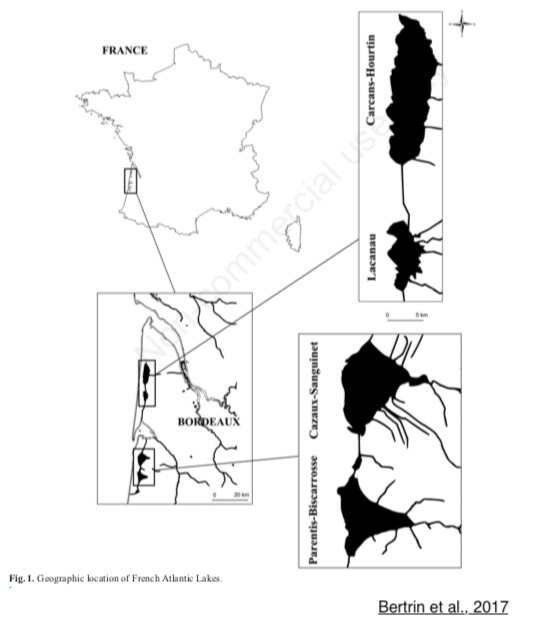AquaVIT
|
Article scientifique V. Bertrin, S. Boutry, G. Jan, G. Ducasse, F. Grigoletto, C. Ribaudo Effects of wind-induced sediment resuspension on distribution and morphological traits of aquatic weeds in shallow lakes Journal of Limnology, 2017, 76, 84-96 The spread of invasive aquatic plants (i.e., aquatic weeds) requires a broader knowledge of the factors determining their settlement at the lake scale, in order to improve management practices and biomonitoring. Among hydrodynamic pressures, wave action might influence submerged vegetation distribution in shallow lakes and potentially engender modifications of plant morphological traits. We here report a field survey conducted between 2014 and 2015 in French Atlantic Lakes to assess the spatial distribution and biomass production of two rooted aquatic weeds, Egeria densa Planch. and Lagarosiphon major (Ridl.) Moss, in relation to wind-induced sediment resuspension, water depth and sedimentary features. Moreover, we explored the relation between plant morphological traits and hydrodynamic disturbance under in situ conditions. At the lake scale, E. densa and L. major formed extensive monospecific stands, and occurred in the same areas only at low biomass. Both monospecific and mixed stands preferentially developed in shallow-sheltered or deep-exposed areas. Plant morphological traits showed different patterns in function of sediment resuspension according to the species and the lake. The influence of resuspension was however not systematic, with many cases where morphological traits were not affected at all. Maximum stem length appeared to be the most correlated trait towards sediment resuspension. Moreover, we found a significant correlation between the biomass and the sedimentary organic matter, indicating an interaction between the organic substrate preference of the plants and the effect of the canopy on fine particles sedimentation. On the whole, we highlighted the link between plant distribution, phenotypic plasticity and sediment resuspension, with calm-water zones favouring the settlement of dense vegetated stands. Our study could thus contribute to improve prediction models for identifying suitable areas for potential colonization by aquatic weeds. Further research is needed to better understand the role played by hydraulic forces in structuring the habitats in shallow lakes.Keywords: Exotic invasive hydrophytes; sedimentary organic matter; wind exposure; biomonitoring; colonization depth; alien plant management A retrouver ici : https://hal.archives-ouvertes.fr/hal-01807103  |